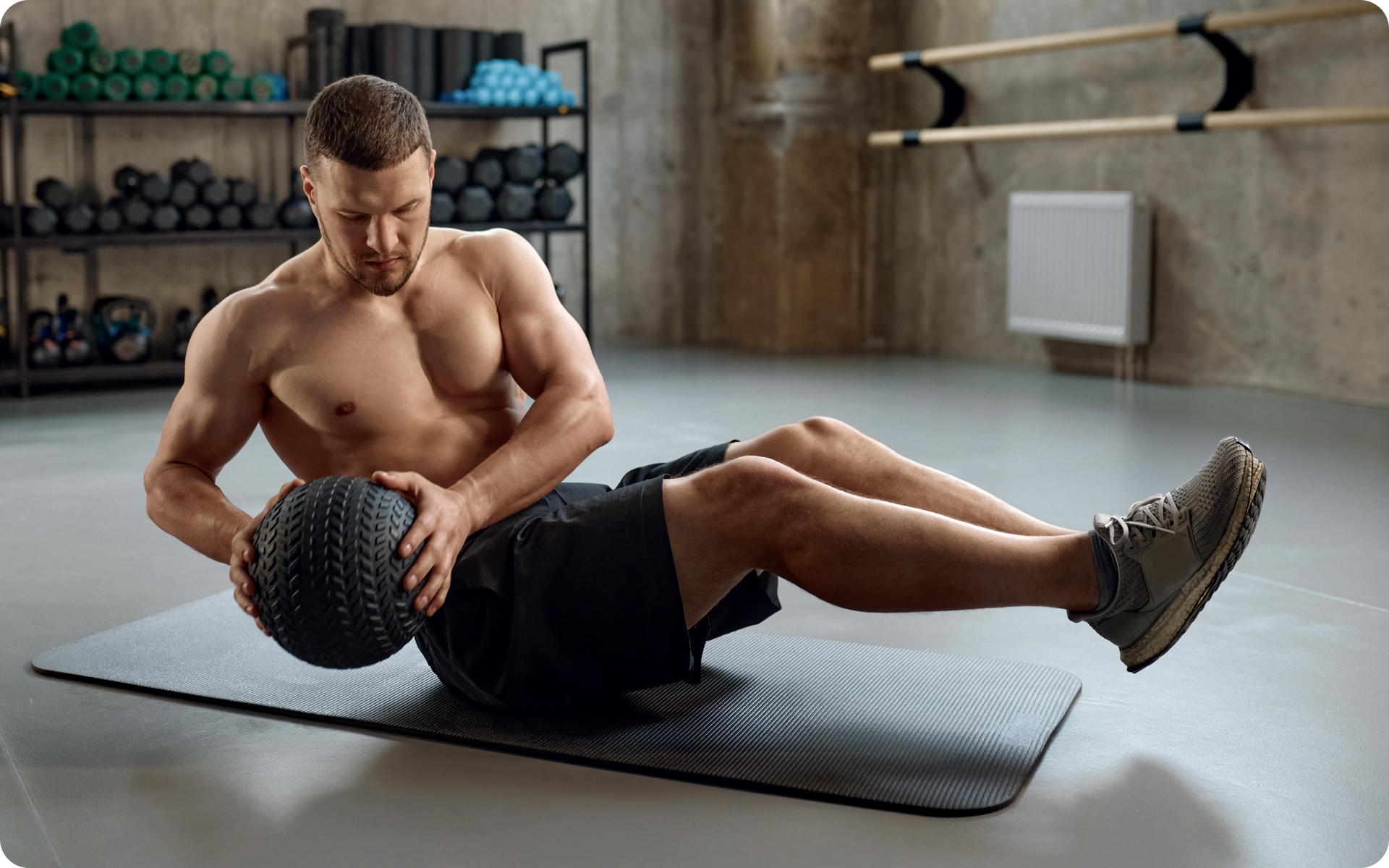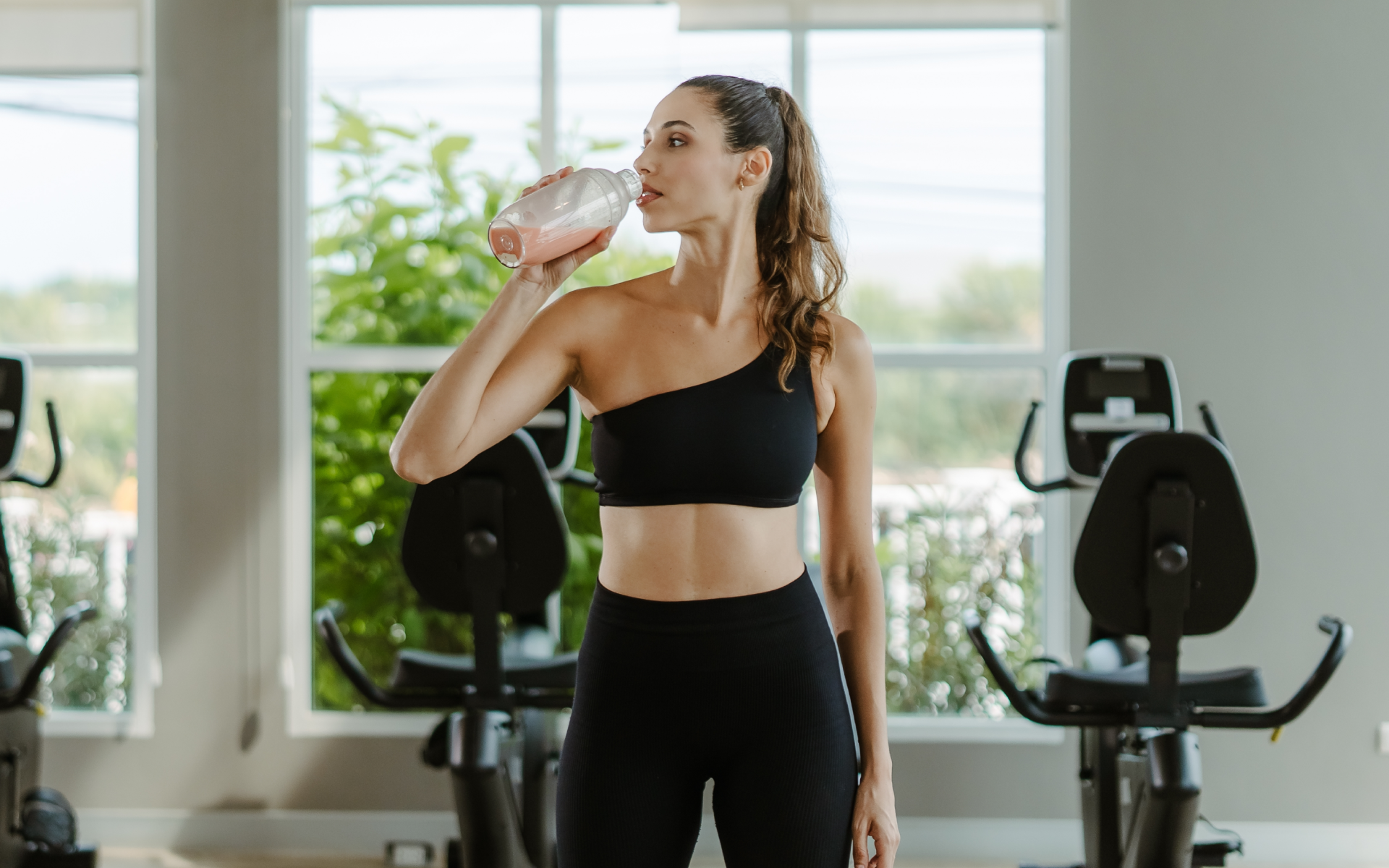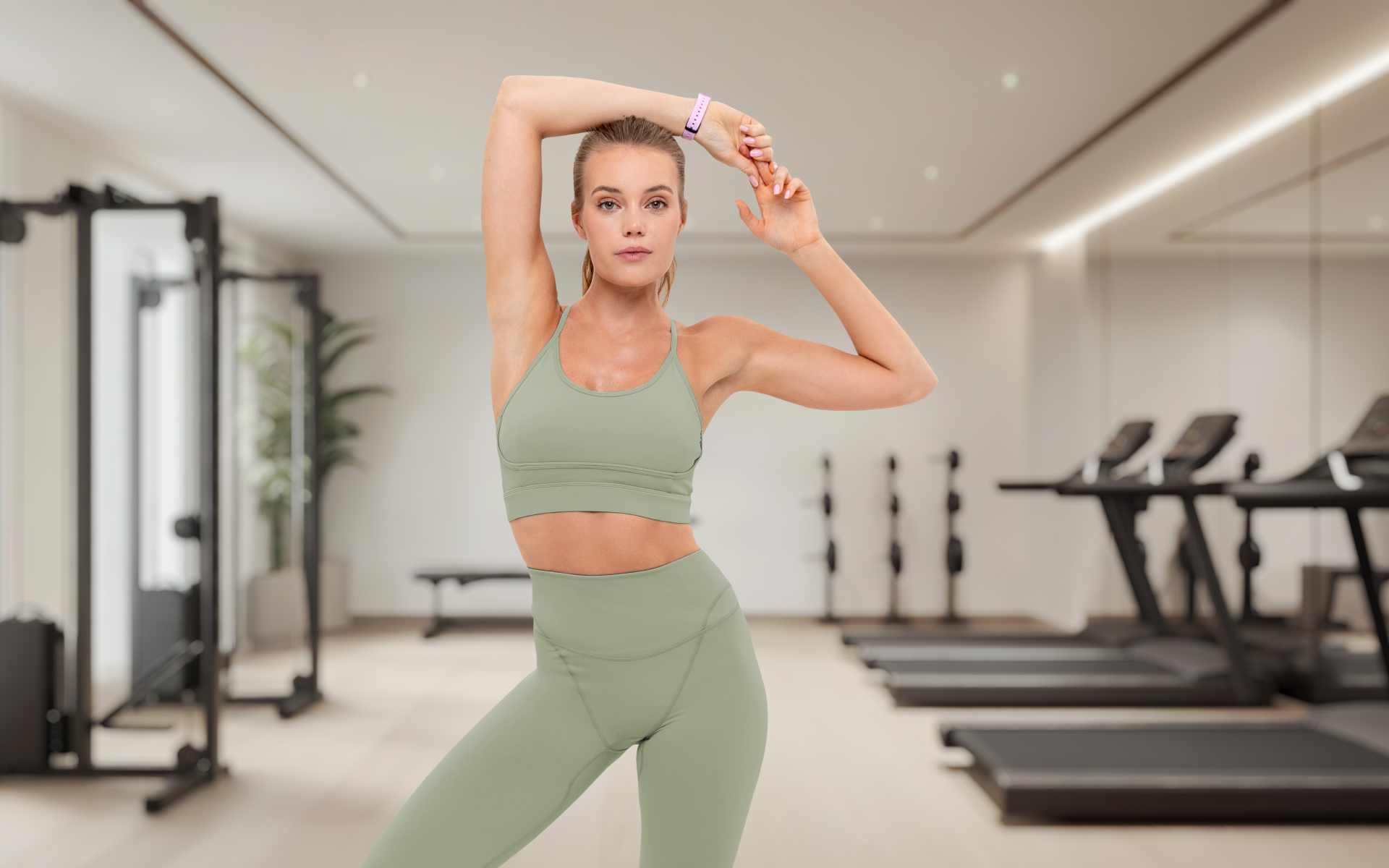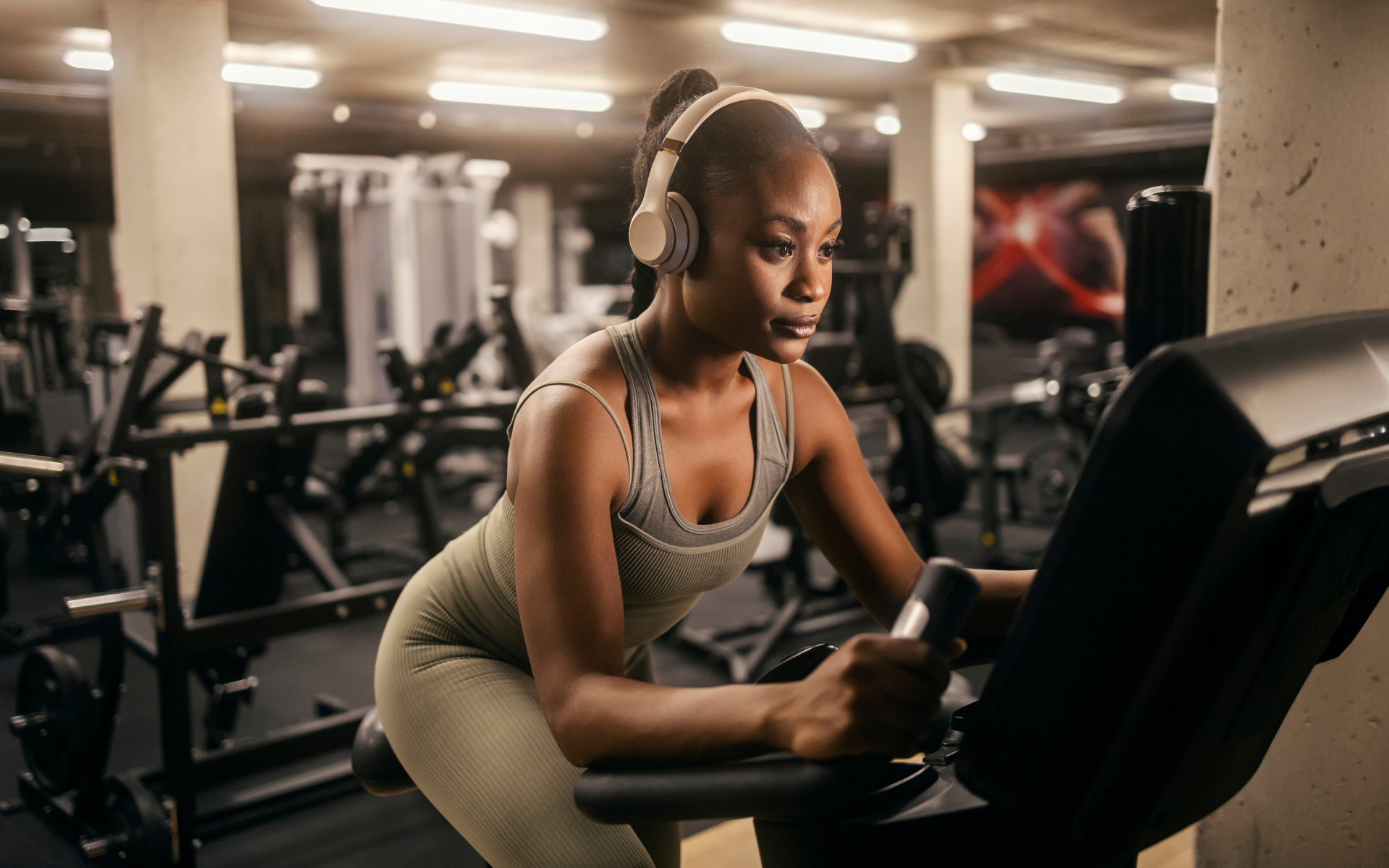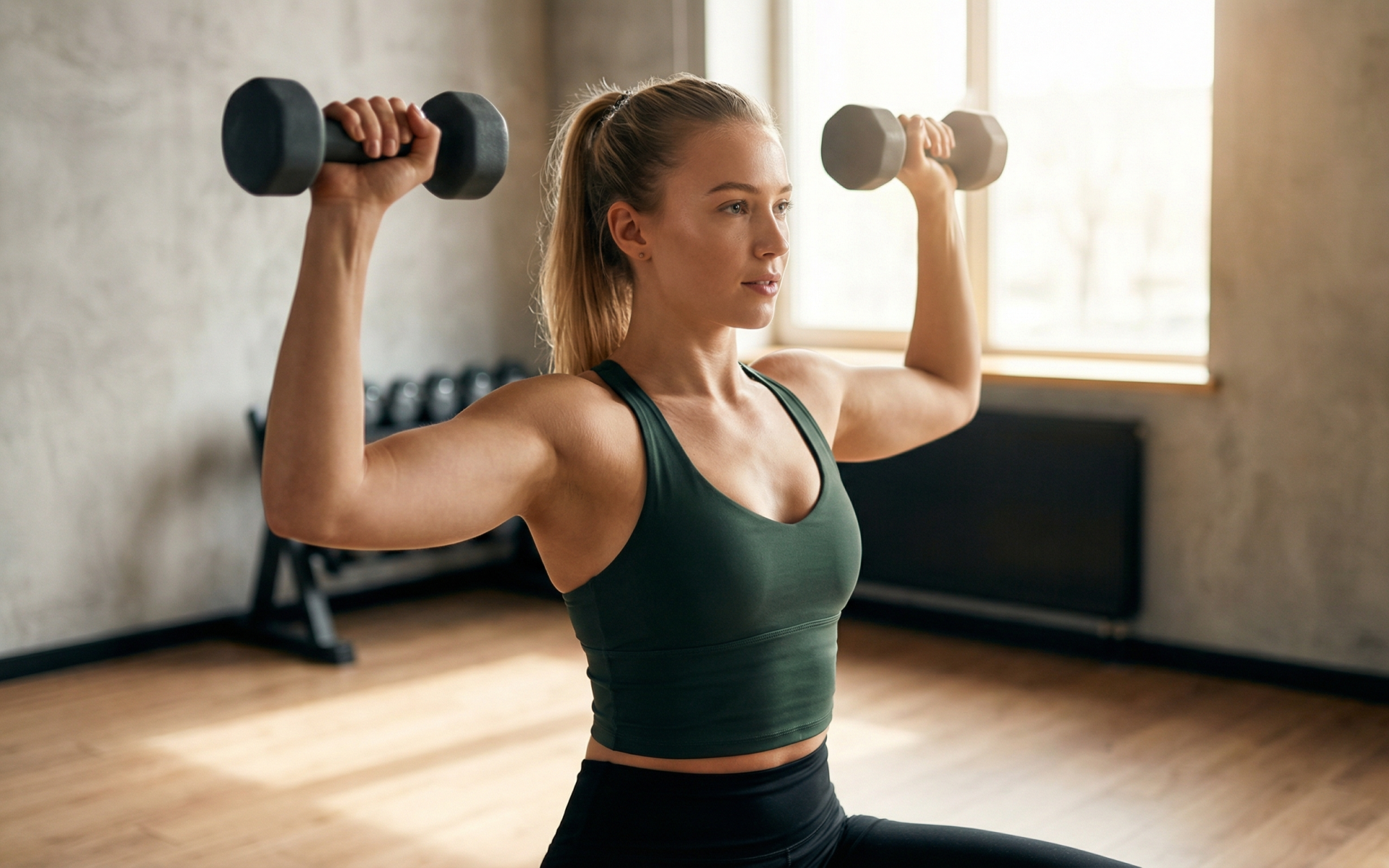Resistance training is the most effective method for building muscle and burning fat. It beats conventional cardio and static exercises hands down when it comes to transforming your physique.
When you’re starting out, focusing on full-body workouts can be hugely beneficial. This approach ensures you’re consistently engaging all the major muscle groups, promoting balanced strength and growth across your body.
These types of workout are also good for maximizing calorie burn in a shorter workout duration, as they’re time-efficient and require your body to expend more energy.
Here are 3 of the best full-body workouts for men who want to achieve a strong, lean, and muscular body without spending hours at the gym. Each workout is designed to challenge you, push your limits, and yield results that you can see and feel.
What Is a Full-Body Workout?
Full-body training is one of the most efficient workout splits as it works every major muscle group in your body. Usually, full-body workouts include upper-body, lower-body, and core exercises.
The main point of full-body training is that a variety of muscle groups are used, rather than just one. This training approach is also used by bodybuilders to build a foundation for their lean muscle mass. The best thing about it is that full-body training is effective for anyone, regardless of their training experience.
According to the Office of Disease Prevention and Health Promotion (ODPHP), exercise should include aerobic activity in addition to muscle-strengthening (11). It’s important to combine both types of these exercises to train every part of the body.
It should be noted that many workouts that contain muscle-strengthening exercises may lead to an increased heart and breathing rates, so consult your doctor to make sure it’s safe for you to perform these exercises.
BetterMe is your fast-track ticket to a long-lasting weight loss! Tailor your fitness journey and maximize your results with just a couple of swipes!
Can Full-Body Workouts Build Muscle?
Full-body workouts are effective for building muscle. There are several reasons why this type of training is beneficial for muscle growth:
- Increased frequency: With full-body workouts, you’re hitting every muscle group multiple times a week, compared to just once or twice with split routines. This higher frequency allows for more stimulation and growth.
- Balanced workload: Full-body workouts ensure all muscles are being worked evenly, which prevents imbalances and promotes overall strength and symmetry.
- Hormonal response: Full-body workouts can trigger a greater release of testosterone, which is essential for building muscle mass.
- Efficient use of time: As mentioned earlier, full-body workouts are time-efficient and allow you to maximize your gym sessions without spending excessive amounts of time working out.
That being said, the key to maximizing muscle growth with full-body workouts is to continually increase the demands on your muscles by adding weight and intensity, in addition to incorporating variations in exercises and rep ranges.
Is 3 Days Enough for a Full-Body Workout Split?
Yes, 3 days is enough for a full-body workout split. This is actually the most commonly recommended frequency for beginners and those who are new to resistance training.
Splitting your workouts into 3 sessions per week allows for proper recovery time between each session, which is essential for muscle growth. It also ensures that you hit all major muscle groups evenly throughout the week, promoting balanced strength and development.
However, as you progress and your body adapts to the workload, you may want to increase the frequency by adding an extra workout day or incorporating more advanced techniques such as drop sets or supersets.
What Is the Best Full-Body Workout for Men?
The best full-body workout for men is one that combines compound exercises with high intensity and progressive overload. Compound exercises are multi-joint movements that engage multiple muscle groups at once, which allows you to work out more muscles in less time.
High-intensity training involves pushing yourself to complete each exercise with maximum effort and focus, which leads to greater muscle recruitment and growth. Progressive overload means gradually increasing the demand on your muscles over time by adding weight or intensity (4).
Combining these three components is key to building muscle and burning fat through full-body workouts. Below are 3 workout variations that incorporate compound exercises, high-intensity training, and progressive overload.
Before we get into the exercises, we’d like to emphasize the importance of warming up.
Warm-up should never be ignored as it’s an incredibly important element of a training session. This will prevent injuries and boost your fitness performance during the workout (1). Make sure you properly warm up the muscles you’re going to use.
Perform 5-10 minutes of cardio activity and a set or two of each exercise with smaller weights to mobilize all your muscles. If you don’t have enough time to do a full workout, make it a bit shorter, but don’t skip the warm-up as doing so may lead to serious injury.
Read More: HIIT Workouts for Men: Pack a Ton of Work into a Short Amount of Time
A Full-Body Workout for Beginners at Home
Most full-body workouts include a certain number of reps and sets to get optimal results. However, it’s important to consider your fitness level and health status, as every person can perform a different number of sets and reps during one workout.
According to the ODPHP, even small amounts of exercise make a difference to overall health (f). If you’re not able to do as many sets or reps as stated in the workout plan, don’t be discouraged, as even a small amount of exercise is beneficial to your general health.
Here’s a list of the most efficient full-body exercises that can easily be done at home, as they don’t require any sports equipment.
1. Push-Ups
This is a basic body-altering exercise that can help strengthen and tone the upper body (chest, shoulders, triceps) and core muscles (abdominal) (3). Repeat this exercise at least 10-12 times and if you feel that it’s a breeze for you, increase the number of reps.
There’s no shame in taking a step back and performing modified push-ups. Even with knees as your support point, you’ll still manage to work the same muscles. Rest for a few seconds, then repeat this set. Avoid sagging down, arching up, hunching your shoulders, and drooping your neck.
BetterMe will keep you laser-focused on your weight loss journey, providing nutrient-packed meal plans, fat-blasting workouts, galvanizing challenges, and much more. Try the app and see for yourself!
2. Squats
Make sure you incorporate this exercise into your workout routine as it’s an effective way to build mass and strength in your leg muscles (quadriceps, hamstrings, and glutes).
By changing up the tempo, you can manage to sneak in some cardio, which will help you peel off those unwanted pounds. Banging out squats on a regular basis will strengthen your heart, improve mobility and flexibility, improve joint health, benefit your posture, and boost your overall leg strength (7).
Complete a set of 8-12 reps, take a breather, then jump right back into it and repeat the set twice more.
3. Burpees
This is another great full-body exercise that combines the benefits of push-ups and squats that can take your cardio endurance to new heights.
You can do a 2-minute drill and test your physical and mental strength or you could try out a descending burpee ladder workout. Start with 10 burpees, then stop for a minute to catch your breath, then repeat, continuing to lower the number of the reps.
If you want to add intensity to your workout, you can jump out of the squat into a standing position. If you feel that the exercise is too difficult for you at first, you can remove the push-up stage to make it easier.
4. Lunges
Lunges are another basic exercise, which helps you build up strength and tone up the core, butt, and legs. It engages the following muscles: quadriceps, hamstrings, calves, and gluteal muscles.
Don’t allow your knees to flare out to the sides and avoid stepping backward or forward too fast, creating tension in your lower back, raising the front heel off the ground, caving your knee, or having sloppy form in general. Start with 2-3 sets of 10-12 repetitions per leg and increase from there.
Check out our blog, Calisthenics Leg Workout, for insight on how to tone and strengthen your lower body.
5. Running and Cycling
Both running and cycling are incredibly beneficial to cardiovascular health. These aerobic activities can help strengthen your heart. However, vigorous exercise for more than 5 hours a week can negatively affect your cardiovascular health. That’s why you should be careful with the physical loads (2, 6).
To make these exercises effective for building muscle strength, a study paper published in the International Journal of Exercise Science suggests incorporating high-intensity interval training into aerobic exercise (8). This involves running or cycling at a moderate intensity with intervals of very high-intensity bursts.
Remember to warm up your muscles before running or cycling. Stretching will help prevent injuries and improve your performance (12).
6. Stair Climbing
Stair climbing has plenty of benefits. It can help build and tone muscles, burn fat and calories, reduce cholesterol levels, and increase stamina and energy. Develop a habit of choosing stairs instead of the elevator every day. This will improve your overall physique and also boost your health. In addition, you can do a workout that includes stair climbing.
Climb to the top of a set of stairs, then climb back down. Rest for a few seconds and repeat this for a minute or as long as you can. To have a better weight-loss effect, climb stairs one step at a time or add a weight vest for an added challenge.
A study of 14 people in the journal PLoS One found that although the action of climbing two steps expended more energy than taking a single step, climbing a staircase one step at a time burned more calories (10).
Our previous blog, Calisthenics for Beginners, provides more tips for starter workouts.
A Full-Body Dumbbell Workout for Men
The famous trainer and fitness model Shaun Stafford has shared a top-notch full-body workout plan for men that will help you achieve your personal fitness goal. He states that this fitness plan is perfect for anybody who wants to increase their muscle size and strength.
Stafford advises working out 4 times a week for 6-8 weeks to get optimal results.“In terms of weight selection, it’s trial and error at first. Always go lighter than you think you need to and build up over the first week. If you can complete the sets and reps with near-perfect form, don’t be afraid to crank it up,” he says.
Generally, for beginners, a rep scheme of 8-12 reps is a good place to start. Once you hit 12 reps on an exercise pretty easily, this is a good sign that it’s appropriate to increase in weight. Here’s a list of the most efficient dumbbell exercises that target different muscle groups.
1. Dumbbell Overhead Press
Sets: 3. Reps: 8. Rest: 90 sec.
This exercise will help build your delts and triceps.
- Stand tall, holding a dumbbell in each hand at shoulder height. Make sure you keep your chest up.
- Press the weights directly overhead until your arms are straight.
- Lower your hands back to the starting position and repeat.
2. Lateral Raise
Sets: 3. Reps: 12-15. Rest: 90 sec.
This exercise will help develop your deltoids and build massive shoulders overall.
- Stand or sit with a dumbbell in each hand at your sides with your palms facing each other.
- Keep your back straight, brace your core, slightly lean forward, then slowly raise the weights to your sides with your elbows slightly bent until your arms are parallel to the floor.
- Slowly lower them back to the starting position. Avoid speeding up to make the workout more effective.
3. Dumbbell Front Raise
Sets: 3. Reps: 12-15. Rest: 90 sec.
This exercise engages both shoulders (deltoids) and the upper chest muscle (pectorals). It will help you build strength and definition in your shoulders.
- Stand tall with your feet about shoulder-width apart. Hold a pair of dumbbells in front of your body with straight, relaxed arms.
- Make sure you keep your chest up and lift the weights in front of you to shoulder height.
- Lower them back to the starting position.
The BetterMe app will kick you out of the mental funk, shake off your extra weight, rid you of your energy-zapping habits, and help sculpt the body of your dreams. Are you intrigued? Hurry up and change your life for the better!
4. Reverse Fly
Sets: 3. Reps: 12-15. Rest: 90 sec.
This is a resistance exercise that engages the posterior deltoids and major muscles in the upper back, including the trapezius.
- Sit with your knees bent and hold a dumbbell in each hand with your palms facing each other.
- Lean forward, bend your elbows slightly, raise the weights out to shoulder height, and squeeze your shoulder blades together.
- Release and lower them back to the starting position.
5. Dumbbell Stiff-Leg Deadlift
Sets: 3. Reps: 12-15. Rest: 90 sec.
This is a great exercise that targets your legs and glutes.
- Take a couple of dumbbells and hold them by your side at arm’s length.
- Brace your core and bend your knees slightly.
- Hinge from your hips without rounding your back until you reach the limit of the range of your hamstrings.
- Hold for a second, then return to the starting position.
<a href=”https://quiz.betterme.world/first-page-generated?flow=2228&utm_source=Blog&utm_medium=Blog&utm_campaign=Full_Body_Workouts_for_Men”><img class=”aligncenter wp-image-30039 size-large” src=”https://cdn.betterme.world/articles/wp-content/uploads/2023/11/71.png” alt=”Full Body Workouts for Men” </a>
6. Dumbbell Concentration Curl
Sets: 3. Reps: 12-15. Rest: 0 sec.
This is a great biceps exercise that targets all parts of this muscle group and develops strength and power.
- Bend down and rest your elbow on your thigh, holding a dumbbell in one hand with your arms straight.
- Curl the weight up, squeeze your biceps at the top, then slowly lower them back to the starting position.
- Switch arms once you’ve completed the desired number of reps.
The Full-Body Kettlebell Workout
Here’s another example of an effective full-body workout, which includes exercises that engage the hamstrings, glutes, hips, core, and shoulders. Start with warm-up sets to prepare the muscle groups you’ll be using throughout this workout.
Kickstand Deadlift (8 reps)
- Stand tall, holding a kettlebell with both hands.
- Take a step back with one leg, approximately one foot behind the hips. Hinge forward to the bottom of a deadlift position.
- Keeping your core braced, drive through the forward leg, and stand back up.
Front Rack Carry (1 min)
- Hold two kettlebells at chest height in a racked position.
- Make sure your wrists are locked out with your knuckles facing the sky and elbows tucked in.
- Keeping your core braced, walk about 30 to 50 feet and then return to the start.
Kettlebell Swings (12 reps)
- Pull your hips back to the wall behind you.
- Grab the kettlebell by the handle with both hands and tilt it toward you.
- Hinge at the hips, bringing the kettlebell back and between your legs.
- Keeping your core braced, propel the kettlebell forward by thrusting your hips forward and contracting your glutes.
- Swing the kettlebell to the chest height and bring it back between your legs.
Read More: How to Lose Thigh Fat for Men: Maximize Your Leg Training Results with These Thigh-Blasting Moves
Tempo Goblet Squats (12 reps)
- Stand with your feet shoulder-width apart, holding a kettlebell at your chest.
- Send your hips back, bend your knees, and lower yourself down into a squat slowly, focusing on a three-second descent.
Tempo Push-Ups Do (8 reps)
- Start in a high plank with your shoulders over your wrists.
- Lower down slowly for 5 seconds, keeping your elbows close to your body.
- Push back up to the starting position in 1 second.
If you want to take your full-body workout to the next level, check out our Front Lever Calisthenics Guide.
DISCLAIMER:
This article is intended for general informational purposes only and does not serve to address individual circumstances. It is not a substitute for professional advice or help and should not be relied on for making any kind of decision-making. Any action taken as a direct or indirect result of the information in this article is entirely at your own risk and is your sole responsibility.
BetterMe, its content staff, and its medical advisors accept no responsibility for inaccuracies, errors, misstatements, inconsistencies, or omissions and specifically disclaim any liability, loss or risk, personal, professional or otherwise, which may be incurred as a consequence, directly or indirectly, of the use and/or application of any content.
You should always seek the advice of your physician or other qualified health provider with any questions you may have regarding a medical condition or your specific situation. Never disregard professional medical advice or delay seeking it because of BetterMe content. If you suspect or think you may have a medical emergency, call your doctor.
SOURCES:
- Aerobic exercise: How to warm up and cool down (2023, mayoclinic.org)
- Exercising for health and longevity vs peak performance: different regimens for different goals (2014, ncbi.nlm.nih.gov)
- Health Benefits of Push-Ups (2023, webmd.com)
- Progressive overload without progressing load? The effects of load or repetition progression on muscular adaptations (2022, ncbi.nlm.nih.gov)
- Should I do a split or full-body workout? (2014, menshealth.com)
- Skeletal Muscle Hypertrophy after Aerobic Exercise Training (2014, ncbi.nlm.nih.gov)
- Squat Exercise (n.d., physio-pedia.com)
- The Effect of High-Intensity Interval Run Training on Cross-sectional Area of the Vastus Lateralis in Untrained College Students (2017, ncbi.nlm.nih.gov)
- The effects of two equal-volume training protocols upon strength, body composition and salivary hormones in male rugby union players (2016, ncbi.nlm.nih.gov)
- The Energy Expenditure of Stair Climbing One Step and Two Steps at a Time: Estimations from Measures of Heart Rate (2012, journals.plos.org)
- Top 10 Things to Know About the Second Edition of the Physical Activity Guidelines for Americans (2019, health.gov)
- To stretch or not to stretch: the role of stretching in injury prevention and performance (2010, onlinelibrary.wiley.com)
